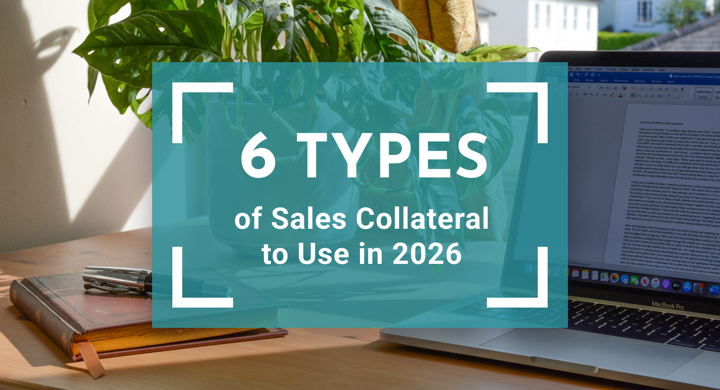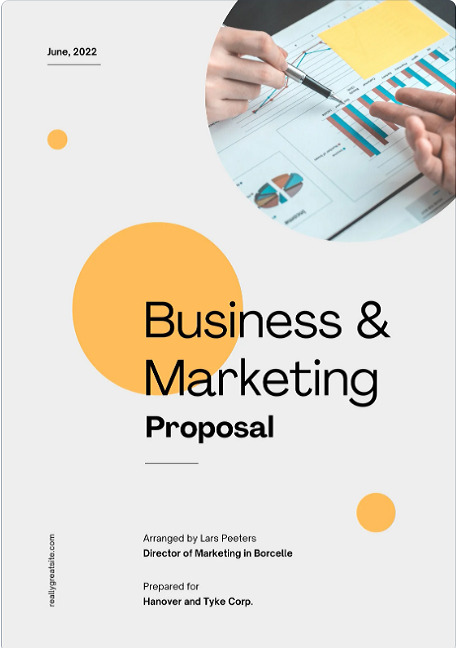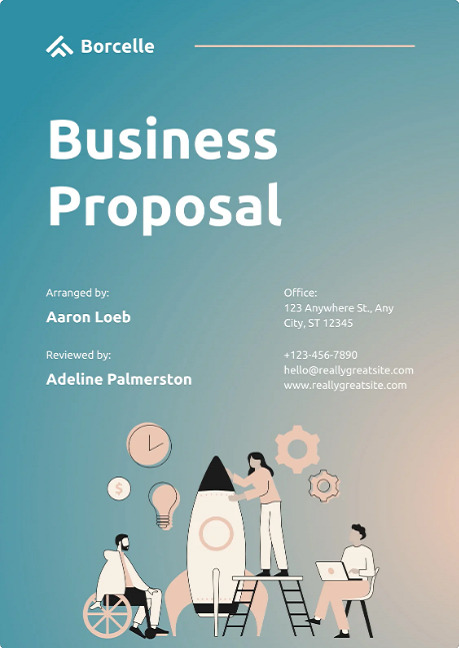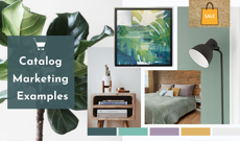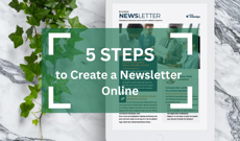Sales collateral has always been a great companion to any sales team. But there is a secret to making it work, and it all starts with creating the right types of content and using them at the right time during the buyer’s journey.
If you’re trying to figure out what types of sales collateral to make in 2026 and how to use it efficiently, we’ve got you covered with an overview of sales content examples to empower your sales process and bring you new clients. So let’s see where the sales collateral belongs on the buyer’s journey and then discuss the most popular types from each of the stages.
What Is Sales Collateral?
Sales collateral is any type of content that supports the sales process and helps convert leads into clients. Any knowledge, information, and media can serve as sales collateral. From small printed flyers to interactive digital brochures and engaging videos, sales collateral helps propel buyers through the sales funnel.
Sales Collateral Types According to the Buyer’s Journey
Awareness Stage
The first stage on the buyer’s journey is about the potential customer’s pain points they’re not fully aware of yet. Thus, the awareness stage is where you encourage your customer to recognize that there is a challenge to overcome and give them the motivation they need to do further research. Sales collateral for the awareness stage introduces your company and the areas you’re the best in. Here are the most common content formats for the awareness stage:
- Blog posts
- Ebooks
- Landing pages
- Webinars
- Infographics
- Newsletters
Consideration Stage
Entering the consideration stage, prospective customers have a more complete understanding of their problem or need and are now starting to evaluate potential solutions. They are not quite ready to buy as they still need a bit of help to realize what the best option for them looks like. For your sales collateral, it’s important to explain why your products or services are valuable and how the leads can work with them to achieve their goals. Here’s the sales collateral to use at the consideration stage:
- Brochures
- Product catalogs
- Case studies
- White papers
- Videos
- Fact sheets
Decision Stage
At the decision stage, buyers choose the product or service that will solve their pain points and will come at a reasonable price. This is usually the stage where sales reps have the most interactions with potential customers so your sales collateral should help you engage in conversations, build trust, and reinforce the value of your products and services. Your sales content can help people make that final decision to make a purchase. Use these content types for the decision stage:
- Presentations
- Proposals
- Competitor comparisons
- Reports
Now that you know about the main types of sales collateral and where to place these documents in the sales funnel, let’s talk about the examples that can guide your leads further down their path to purchasing your products and becoming your clients.
Sales Collateral Examples
Sales collateral comes in many different formats and our favorite one is FlippingBook. It allows you to convert your PDFs to interactive flipbooks, add your company branding and interactivity, easily share and track your documents. This way, you can create a great variety of sales collateral: ebooks, newsletters, brochures, catalogs, proposals, and reports just using one convenient tool.
What's more, you can try the FlippingBook app that helps your sales team keep trackable sales collateral in their pockets. You can share any document through the app and track how and when leads interact with your collateral for effective, timely follow-ups. Watch the video to learn more!
The app is available for registered FlippingBook clients and trial users. You can download it from the App Store or Google Play.
And now, let's look at the sales collateral examples in more detail.
#1 Ebooks
Ebooks are perfect for raising your brand awareness, generating new leads, and sharing your knowledge with the world. As technology develops, ebooks become more and more enticing and their interactive format allows you to engage your audience with videos, GIFs, pop-up image galleries, and outbound links. At the awareness stage, an ebook helps the lead become fully immersed in your product and lets you be creative, think outside the traditional linear format, and have fun with creating content!
See for yourself, flip through this interactive ebook with GIFs, videos, and pop-ups, and learn about the reasons for making your PDF interactive.
6 reasons to make a PDF interactive
If you want to know all the details on how to enhance your interactive ebook, we’ve got a whole blog post about it, check it out!
What’s more, ebooks made with such digital ebook creators as FlippingBook, have a built-in lead capture form. It allows you to collect leads right within your ebook and also track if and how often they open your document. This is a very helpful tool to use during the awareness stage as learning more about how people interact with your content will help you identify the most prominent prospects and show where you should focus your sales efforts during the next stages of the buyer’s journey.
#2 Newsletters
A digital newsletter is a great way to communicate and connect with your audience at the awareness stage. Sending a nice-looking newsletter with useful tips and tricks and relevant information keeps your brand in your potential customers' minds and establishes your company as an expert in your field.
For instance, look at this online newsletter that is very easy to share via link, post on social media, or embed into a website, as we did below.
💡 Pro tip
If you want to distribute your PDF or digital newsletter via email and you’d rather have a preview than just a link, you can insert a nice picture or GIF of your newsletter with a hyperlink. This way, your readers will be captivated by your newsletter’s rich visuals even before they open it! Read about how to embed a PDF into an email in our blog post.
#3 Brochures
An interactive brochure is an ideal format for the consideration stage: it highlights your brand values and describes how you can help prospects achieve their goals. Be sure to make your brochure easy to read and add enough information to motivate your lead to learn more about you and your products—visit your website, watch a video, or book a demo with your sales team.
Empower your written content with videos, GIFS, and graphs, and weave in trust indicators such as testimonials and short case studies to tap into social proof. You can also add pop-up images with details about your special programs to your brochure: click on the images to open a pop-up and read more about all the career opportunities. So much valuable info on just one page!
#4 Product Catalogs
Product catalogs are the best for showing your audience what your product is, how it works, and what problems it can solve for them. At the consideration stage, don’t miss the opportunity to impress your potential customers and create visually compelling and interactive catalogs that highlight your products and services.
Have a look below and check out this catalog with a pop-up image gallery that allows you to show the items in your catalog from every angle and in every color. Your readers will love this immersive shopping experience, and your products will sell like hot cakes!
Plus, online catalogs allow you to link items in your catalog to the products in your online store. This way, people can simply click on the products they like and buy them right away. It will make your catalog very convenient to use and will sufficiently increase orders. What's more, you can add contact or order forms to your catalogs to generate leads, let your clients order products, and make it easier for your readers to contact you from your document. Digital catalogs can play an important role in the buyer’s journey and help lead your prospect from the consideration to the decision stage.
Check out our video on how to create powerful interactive catalogs and wow your readers right away!
#5 Proposals
When your lead arrives at the decision stage, an interactive proposal that stands out will become a valuable asset for your sales reps. The best way to win your future customer’s heart is to personalize your proposal: gather all the insights about your customers that you got while talking to them, for example, what their main pain points are, what features they are most interested in, how they want to use your product, etc. Thus, you show that you understand your leads' challenges and reassure them that you are the right company to help them find the solution they need and make their lives easier.
With FlippingBook, you can not only enhance your digital proposal with interactivity to make it stand out from the crowd but also share your proposal as a trackable individual link, track the lead’s activity with it, and contact them at just the right time! What's more, thanks to integration with Zapier, you can add several triggers for events related to trackable links, that can benefit your lead nurturing as well.
Your online proposal can look like this:
💡 If you want to create an online proposal but don't have a PDF yet, we've got you covered. Check out these free proposal Canva templates that you can design and then get back to FlippingBook for creating proposals right away. What's more, FlippingBook has a convenient integration with Canva that allows you to seamlessly proceed from designing a PDF in Canva to publishing your PDF to FlippingBook, where you can customize it and make it fun and interactive.
#6 Reports
If you have valuable data and research that would show why a lead should choose your solution, a digital report is just what you need. It’s a very convenient format for a report as it’s eye-catching, accessible, and can contain lots of insights.
FlippingBook helps you make your online reports more visual, compelling, and easy-to-navigate. Check out this report with videos that deliver information in a less conventional, but more entertaining way and engage readers with powerful and rich content.
Berkshire Real Estate Market Report
You can also track your report to see how people interact with your document and analyze what info interests your audience the most and how much time they spend reading your report. With this data, you’ll be able to enhance your content and make it even better and more valuable for your readers.
That’s it! We hope that our article will help you create a more sustainable and effective sales strategy. Making top-notch sales collateral and using it at the right time will allow you to build trust, educate your audience about your brand, and eventually lead them to buy your products and services and become your loyal customers. Good luck!

